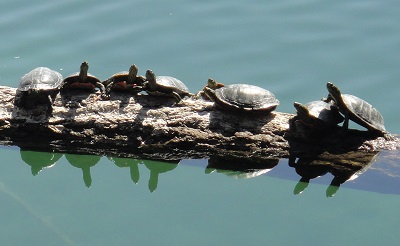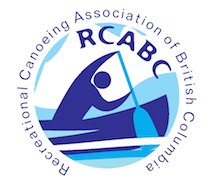
WILDLIFE AND HABITAT TOPICS - HOW CAN YOU HELP?
BC has exceptional diversity of fish species. Consider that the main aquatic habitats are the coastline of the Pacific Ocean, massive river systems such as the Fraser, Columbia, Skeena and Stikine draining into the Pacific and the Liard and Peace rivers draining into the Arctic Ocean and thousands of large and small lakes and wetlands. World renowned fishing and fish viewing can be found in many areas. The Pacific and Kokanee salmon runs, 600kg Fraser River sturgeon and Kamloops trout are integral to many British Columbians’ identity.
Increasingly, many BC river, lake and ocean fish species are under serious threat due to habitat loss, agricultural practices, dams, climate change, pollution and overfishing. However we do have the ability to reverse many of these threats and there have been many positive reports of salmon runs and other fish returning to restored rivers, lakes and ocean inlets.
FISH - HOW CAN YOU HELP?
- Learn about local fish species, spawning seasons and how to minimize canoeists’ impact.
- Encourage positive impact through habitat restoration or by supporting wildlife organizations.
- If you choose to fish, follow all regulations such as seasons, limits, licenses, and regional regulations which can be very area specific.
- Learn to identify salmon redds (nesting sites in the gravel river bottom), where they typically are found and be careful not to disturb them with paddles, poles or by walking on them.
- Consider our daily actions that directly and indirectly affect our waterways and fish (electricity consumption, chemicals entering sewage systems, water consumption, agricultural practices and food consumption, etc.)
- Learn locations of man made Large Woody Debris structures in BC rivers and which species they are designed to help. Be careful around them and report any safety concerns to the Navigable Waters Protection Division of Transport Canada.
Bird species in BC are also highly diverse due to the variety of ecosystems. Waterways and their shorelines are extremely important and sensitive habitat and are increasingly under pressure from development, boat wakes and industry. Canoeists must be careful not to add to this pressure.
BIRDS - HOW CAN YOU HELP?
- Learn about nesting seasons of local birds, particularly in shoreline and marsh areas and avoid paddling close to these areas during sensitive times. Birds can be resident year round, transient during spring or fall migrations or resident during the spring and summer.
- Rivers are home to many water birds such as Harlequin Ducks, Mergansers, Dippers, Ospreys, Eagles and Kingfishers. Do your best to avoid disrupting them while canoeing. Paddle slowly and quietly or float by on the far side of the river.
- Be particularly careful with birds that have young. It is easy to recognize if they are nervous about your presence.
- Keep campsites clean to avoid attracting scavenging birds which often prey on smaller birds and eggs in nearby nests.
- Support habitat enhancement projects or organizations, and be vocal about preserving bird habitat.
British Columbia is well known for its wildlife and canoeing is one of the least invasive ways to view them in their natural habitats. Mammals range in size from mice to moose, and include water species such as beaver, mink and otter. Ocean mammals such as whales, seals, dolphins and sea lions are exciting wildlife viewing opportunities while canoeing on BC’s extensive coastline.
Shorelines are critical habitat for mammals and need to be preserved to maintain their healthy populations. People love shorelines too, which is in direct competition with wildlife.
MAMMALS - HOW CAN YOU HELP?
- Learn which mammals can be found in your area and when. Avoid impacting them as much as possible. For example, moose feed in the morning or evenings in marshy areas. If you’re canoeing in marshy areas at these times, anticipate that you may see a moose, don’t be disruptive and keep your distance.
- Keep campsites extremely clean and scent free to avoid attracting rodents and bears. Repeated camping that leaves food attractants leads to wildlife problems. Rodents attracted to camping areas can do significant damage to gear dry bags, tents, etc.
- Bears are particularly common during salmon spawning and must be respected. See the section on Bear Safety for more information.
- Support organizations or projects that preserve or restore habitat.
- Be vocal with government if you feel development or resource extraction is having too large an impact on wildlife.
The importance of insects in biodiversity is often overlooked but the fact is that they are a huge part of the biomass in BC’s environment. They are crucial to the food chain and can be found in virtually every type of microenvironment such as under rocks, in grassy areas, shrubs and trees, in the water, in decaying wood, etc. Insects are mostly harmless and can be fascinating when you take the time to appreciate them, as most kids that go on canoe trips can verify.
INSECTS – HOW CAN YOU HELP?
- The largest threat to insect populations and diversity is habitat loss, agriculture, climate change and pollution.
- Canoeists should avoid disturbing their habitat under stones and wood debris.
- Decaying wood on shorelines and in rivers can become important habitat for insects that are vital to larger species such as fish and birds.
- Some types of agriculture destroy biodiversity and negatively impact local waterways. Consider learning more about the food you purchase, where it comes from and how it is grown.
- Be vocal with government if you feel development, agriculture or resource extraction is having too large an impact on habitat
Shorelines can be very long but also very narrow making them very fragile. Their habitat is extremely important to a vast number of species of plants and animals. Canoeists typically stay close to shorelines for safety and scenery and wildlife viewing opportunities.
SHORELINES - HOW CAN YOU HELP?
- Follow Leave No Trace Principles, especially when camping.
- Look for signs that your landing or camping spot is an important wildlife area and find another spot if it is.
- Large canoe groups can have a large impact. Extra care is required and large groups may need to be split up.
- Dragging canoes onto shore can quickly damage them through repeated abrasion. This can shorten the life of your canoe and it leaves bits of boat material that don’t biodegrade and accumulate over time.
- Try to find sand, gravel or rock landing sites instead of areas with vegetation, particularly in heavily used waterways.
- Be vocal with government if you feel development, agriculture or resource extraction is having too large an impact on shoreline habitat.



















